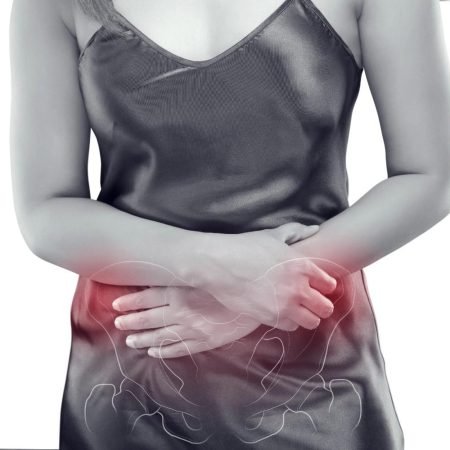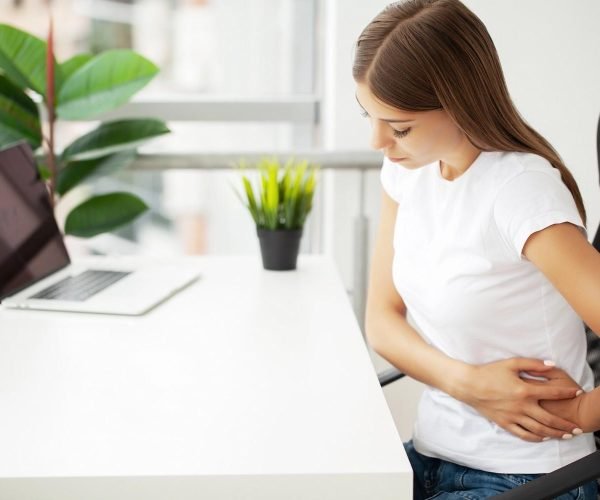Pelvic Pain and PID
- Don’t Let Pain Grow—Get Help Early.
- Early Detection, Faster Relief.
- Stop Pelvic Pain in Its Tracks

Pelvic Pain and PID
- Don’t Let Pain Grow—Get Help Early.
- Early Detection, Faster Relief.
- Stop Pelvic Pain in Its Tracks

Fast, Convenient Care
Same-day appointments and walk-in availability to provide quick and accessible care for urgent health concerns.
Accurate Diagnosis
On-site evaluations and diagnostic testing ensure a precise diagnosis and immediate treatment for your health condition.
Specialized Women’s Health Care
Compassionate, expert care for women’s health issues, from pelvic pain concerns, tailored to your needs.
Comprehensive Treatment Options
Safe, effective treatments for a variety of conditions, including medications and minor in-clinic procedures.

Understanding Pelvic Pain and Pelvic Inflammatory Disease: What You Need to Know
Women’s health encompasses a wide range of medical conditions and concerns, with gynecology playing a critical role in maintaining overall well-being. Gynecology focuses on the female reproductive system, including the uterus, ovaries, and vagina, as well as conditions that may arise within this area. One of the most common yet often under-discussed health issues many women face is pelvic pain.
Minor Pelvic Pain in the Non-Pregnant Patient
What is Minor Pelvic Pain?
Common Causes of Minor Pelvic Pain:
Many women experience pain during their menstrual cycle, which can range from mild to severe.
Some women feel pain or discomfort during ovulation, which typically occurs in the middle of their menstrual cycle.
UTIs can cause pelvic discomfort, painful urination, and frequent urges to urinate.
Conditions like constipation or irritable bowel syndrome (IBS) can lead to pelvic pain due to pressure on the abdominal organs.
Pelvic floor tension or muscle strain can contribute to pelvic discomfort, especially if there is improper posture or excessive physical activity.
When Should You Be Concerned?
- The pain lasts longer than usual or increases in intensity.
- The pain interferes with your daily activities, or is accompanied by other concerning symptoms such as fever, nausea, or unusual bleeding.
- You experience pain that feels significantly different from your usual symptoms or has changed in nature.
Symptoms of Minor Pelvic Pain
- Dull, achy pain or sharp cramping sensations in the lower abdomen or pelvis.
- Pain during or after sexual intercourse that is consistent or worsening.
- Painful urination or difficulty urinating, which may indicate a urinary tract infection.
- Changes in bowel movements, such as bloating, diarrhea, or constipation.
- Menstrual irregularities or increased pain during ovulation.

The Importance of Addressing Pelvic Pain Early
- Prevention of Chronic Pain: Early diagnosis and treatment can prevent the condition from becoming chronic, leading to long-term pain.
- Improved Quality of Life: Addressing pelvic pain early can help maintain a woman’s ability to engage in normal daily activities without discomfort.
- Avoidance of Complications: Timely intervention can prevent complications that may affect fertility or lead to more severe health issues.
Pelvic Inflammatory Disease (PID): What You Need to Know
What is PID?
Why PID Is Serious
If left untreated, PID can lead to significant health problems. The infection can cause:
- Infertility: Damage to the reproductive organs can make it difficult or impossible to conceive.
- Chronic Pelvic Pain: Ongoing pain and discomfort in the lower abdomen may persist, even after the infection is treated.
- Ectopic Pregnancy: PID increases the risk of an ectopic pregnancy, where a fertilized egg implants outside the uterus, usually in the fallopian tubes, which can be life-threatening if not addressed.
Symptoms of PID
- Severe pelvic pain or lower abdominal discomfort.
- Unusual vaginal discharge, often with a strong, unpleasant odor.
- Fever and chills, frequently accompanied by nausea.
- Painful sexual intercourse or discomfort while urinating.
- Irregular menstrual bleeding or spotting between periods.
Symptoms of Minor Pelvic Pain
Treatment for PID depends on the severity of the infection. The goals are to eliminate the infection, prevent complications, and reduce pain. Common treatment options include:
The primary treatment for PID is a course of antibiotics to clear the infection. If the infection is mild, oral antibiotics are typically sufficient. In more severe cases, intravenous (IV) antibiotics may be required to more effectively treat the infection.
In some instances, if the infection is particularly severe or if the patient cannot tolerate oral medications, hospitalization may be necessary. This allows for more intensive treatment with stronger antibiotics and monitoring.
Rarely, surgery is needed to remove damaged tissues or treat complications arising from PID, such as abscesses or blocked fallopian tubes.
How Common is Pelvic Pain?
- Widespread Issue: Up to 25% of women experience pelvic pain, making it a common health concern.
- Not Always Related to Pregnancy: Pelvic pain can affect women who are not pregnant and is not always related to menstruation.
- Variety of Causes: The causes of pelvic pain can range from mild conditions like menstrual cramps to more serious conditions like endometriosis.
By addressing pelvic pain early, women can ensure their reproductive health is properly managed and prevent the development of more serious, long-term issues. Don’t let pelvic pain go unaddressed—talk to a gynecologist to understand what might be causing your discomfort and how it can be treated effectively.

How NextGen Walk-in Clinic & Urgent Care Can Help
Immediate Care and Convenience
- Walk-In Appointments: You don’t need to wait for an appointment. Visit us when it’s most convenient for you, and we’ll help with your pelvic pain or other symptoms.
- Quick Diagnosis and Treatment: We provide fast, accurate testing to diagnose pelvic pain and other gynecological concerns. Our clinic offers STI screenings, pelvic exams, and lab tests to identify the cause of your symptoms and determine if PID or another condition is present.
Compassionate, Expert Care
- Annual wellness exams
- Birth control counseling
- STI testing and prevention
- Menstrual and menopause management
Comprehensive Women’s Health Services
- Annual Wellness Exams: Regular exams to monitor your overall reproductive health.
- Birth Control Counseling: Help with selecting the right contraception for your needs.
- STI Testing and Prevention: We offer screenings and advice on preventing sexually transmitted infections.
- Menstrual and Menopause Management: Helping you manage symptoms and find solutions that work for your health and lifestyle.

Take Charge of Your Health Today
Why Prompt Attention Matters:
- PID can cause irreversible damage: Left untreated, PID can lead to chronic pelvic pain, infertility, or complications in future pregnancies. Immediate medical attention is essential to avoid these risks.
- Don’t wait for symptoms to worsen: If your pelvic pain is persistent, severe, or accompanied by other concerning symptoms like unusual discharge, fever, or painful urination, it’s important to seek care right away. Early diagnosis ensures that you receive the appropriate treatment before the condition worsens.
How Can Minor Pelvic Pain Be Treated?
Lifestyle Changes
- Regular Exercise: Staying active can help manage pelvic pain and reduce stress.
- Balanced Diet: Eating a healthy diet with plenty of fiber can help prevent constipation and reduce pressure on the pelvic area.
- Stress Management: Practices like yoga, meditation, or mindfulness techniques can help manage pain and reduce muscle tension that may contribute to pelvic discomfort.
Over-the-Counter Pain Relief
- NSAIDs: Nonsteroidal anti-inflammatory drugs, such as ibuprofen, can help alleviate pain and inflammation associated with pelvic discomfort.
Prescription Medications
- Hormonal Therapy: Birth control pills or hormonal therapy can help manage menstrual-related pain by regulating hormone levels.
- Antibiotics: If an infection, such as a UTI, is identified, antibiotics will be prescribed to treat the infection.
Physical Therapy
- Pelvic Floor Exercises: Physical therapy focusing on pelvic floor muscles can relieve tension, improve muscle strength, and reduce pain. A specialized therapist can guide you through exercises designed to strengthen the pelvic floor and alleviate discomfort.
How NextGen Walk-in Clinic & Urgent Care Can Help At NextGen Walk-in Clinic & Urgent Care
We understand the challenges of dealing with pelvic pain. Our team is committed to providing prompt, comprehensive care for all of your health concerns. We offer:
- Same-day appointments and walk-in availability, so you can receive care when you need it most.
- Thorough evaluations to help identify the cause of your pelvic pain, including physical exams and diagnostic tests.
- Effective treatment options, from medications to lifestyle recommendations, to help you manage and alleviate your symptoms.
- Compassionate care tailored to meet your unique health needs.

Pelvic Inflammatory Disease (PID)
PID is an infection of the reproductive organs, primarily caused by untreated sexually transmitted infections (STIs) such as chlamydia or gonorrhea.
PID can cause infertility, chronic pelvic pain, and increase the risk of ectopic pregnancy.
It affects 1 in 8 sexually active women under the age of 25.
Includes severe pelvic pain, abnormal vaginal discharge, fever, painful intercourse, and irregular bleeding.
Untreated PID can lead to the formation of abscesses or scarring of the fallopian tubes, which may require surgery.
PID is diagnosed through pelvic exams, STI screenings, and sometimes imaging tests or laparoscopy.
The primary treatment is antibiotics, often administered orally, though severe cases may require intravenous antibiotics or hospitalization.
Multiple sexual partners, unprotected sex, previous PID episodes, and douching increase the risk of developing PID.
Women with untreated PID have a higher risk of infertility and complications during pregnancy.
Safe sex practices, regular STI screenings, and prompt treatment of infections can significantly reduce the risk of developing PID.
Customer Reviews for NextGen Walk-in Clinic & Urgent Care

Ola A.

Christopher N.
Lorem ipsum dolor sit amet, consectetur adipiscing elit, sed do eiusmod tempor incididunt ut labore et dolore magna aliqua. Ut enim ad minim veniam, quis nostrud exercitation ullamco laboris nisi ut aliquip ex ea commodo consequat. Duis aute irure dolor in reprehenderit in voluptate velit esse cillum dolore eu fugiat nulla pariatur. Excepteur sint occaecat cupidatat non proident, sunt in culpa qui officia deserunt mollit anim id est laborum.

Gail F.
Lorem ipsum dolor sit amet, consectetur adipiscing elit, sed do eiusmod tempor incididunt ut labore et dolore magna aliqua. Ut enim ad minim veniam, quis nostrud exercitation ullamco laboris nisi ut aliquip ex ea commodo consequat. Duis aute irure dolor in reprehenderit in voluptate velit esse cillum dolore eu fugiat nulla pariatur. Excepteur sint occaecat cupidatat non proident, sunt in culpa qui officia deserunt mollit anim id est laborum.
Key Facts About Minor Pelvic Pain and Pelvic Inflammatory Disease (PID)
Minor pelvic pain affects 1 in 4 women at some point in their lives.
The most common cause of pelvic pain, affecting up to 50% of women during menstruation.
Known as "mittelschmerz," about 20% of women experience pain during ovulation.
Pelvic floor tension or injury can cause discomfort, especially in women who have had pelvic trauma or strain.
These infections can cause pelvic pressure and pain, particularly when urinating.
Issues like constipation or irritable bowel syndrome (IBS) can lead to pelvic discomfort.
Pain can vary from dull, achy discomfort to sharp, cramping sensations.
Stress, lack of exercise, or poor diet may exacerbate pelvic pain symptoms.
Over-the-counter NSAIDs (e.g., ibuprofen) can help alleviate mild to moderate pelvic pain.
If pain lasts longer than usual or is accompanied by fever, nausea, or unusual bleeding, professional care is needed.

